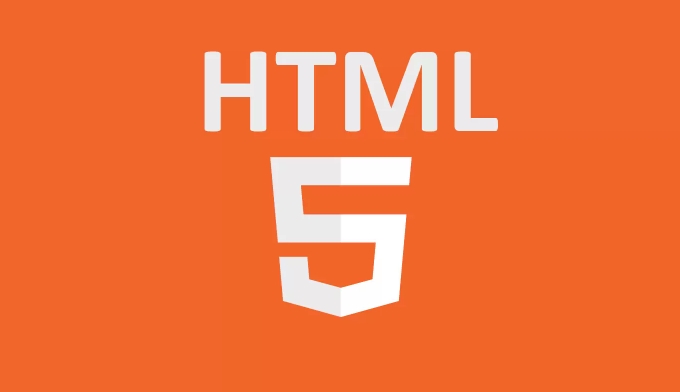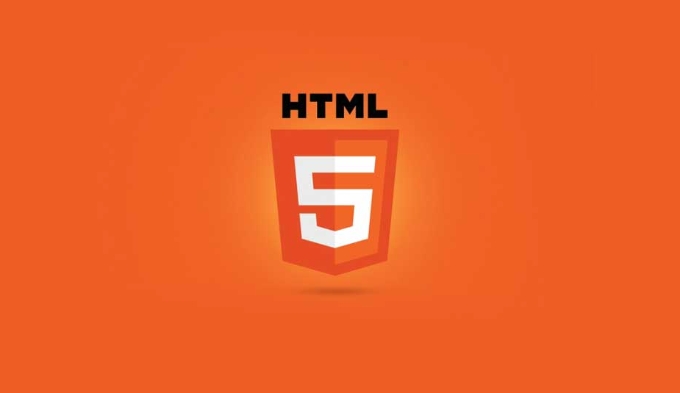Improving SEO with HTML5 semantic markup and Microdata.
Using HTML5 semantic tags and Microdata can improve SEO because it helps search engines better understand page structure and content meaning. 1. Use HTML5 semantic tags such as

Many people ask how to use HTML5 semantic tags and Microdata to improve SEO. In fact, the key is to make search engines better understand your content. HTML5's semantic elements and Microdata can help crawlers identify page structure and content types, thereby increasing ranking potential.

Organize page structure using HTML5 semantic tags
In the past, people liked to build pages with a bunch of divs, but for search engines, this structure is very vague. HTML5 provides semantic tags such as <header></header> , <nav></nav> , <main></main> , <article></article> , <section></section> , <footer></footer> , which can clearly tell the search engine the role of each block.

for example:
- The navigation bar is wrapped in
<nav></nav>, and the link is placed inside - Main content is placed in
<main></main>to avoid being interfered by sidebars or ads - Use
<article></article>for article content to facilitate search engines to crawl separately
Although doing this will not directly add points, it will help search engines build more accurate page models, especially for content extraction and summary display.

Add Microdata to mark the specific content and meaning
Microdata is a way to add structured data in HTML, which allows search engines to understand that the "actor" on your page is people, "iPhone 15" is products, "4.8/5" is rating, etc.
To give a simple example: If you want to mark the author and publication date of an article, you can write it like this:
<article itemscope itemtype="https://schema.org/BlogPosting"> <h1 itemprop="headline">SEO optimization tips</h1> <span itemprop="author">Zhang San</span> <time itemprop="datePublished" datetime="2023-10-01">October 1, 2023</time> </article>
In this way, Google can clearly know which blog post was written and when it was published. This is especially useful for rich snippets displays, such as rating stars, pictures, prices, etc. in search results.
Common application scenarios include:
- Price, inventory, and brand marked on the product page
- Address, phone number, and ratings are marked in restaurant information
- Video page labeling time, uploader, thumbnail
Pay attention to details to achieve maximum effect
While semantic tags and Microdata are useful, there are some things that are easy to overlook:
- Don't use the wrong tag: For example,
<article></article>is suitable for independent content, while<section></section>is more favorable to chunked organization - Avoid duplicate marks: using multiple schema types in one region at the same time, which is easy to confuse
- Test structured data: You can use Google's Rich Results test tool to check whether it is effective
- Stay updated: schema.org's criteria will change, and it is recommended to check regularly for new fields to be available
In addition, don’t expect Microdata to rise immediately. It is part of long-term optimization and needs to be used in conjunction with other SEO means.
Basically that's it. HTML5 and Microdata are not complicated, but are easily overlooked. Using them rationally not only helps search engines understand content, but also improves the maintainability and barrier-free experience of web pages.
The above is the detailed content of Improving SEO with HTML5 semantic markup and Microdata.. For more information, please follow other related articles on the PHP Chinese website!

Hot AI Tools

Undress AI Tool
Undress images for free

Undresser.AI Undress
AI-powered app for creating realistic nude photos

AI Clothes Remover
Online AI tool for removing clothes from photos.

Clothoff.io
AI clothes remover

Video Face Swap
Swap faces in any video effortlessly with our completely free AI face swap tool!

Hot Article

Hot Tools

Notepad++7.3.1
Easy-to-use and free code editor

SublimeText3 Chinese version
Chinese version, very easy to use

Zend Studio 13.0.1
Powerful PHP integrated development environment

Dreamweaver CS6
Visual web development tools

SublimeText3 Mac version
God-level code editing software (SublimeText3)
 The Importance of Semantic HTML for SEO and Accessibility
Jul 30, 2025 am 05:05 AM
The Importance of Semantic HTML for SEO and Accessibility
Jul 30, 2025 am 05:05 AM
SemanticHTMLimprovesbothSEOandaccessibilitybyusingmeaningfultagsthatconveycontentstructure.1)ItenhancesSEOthroughbettercontenthierarchywithproperheadinglevels,improvedindexingviaelementslikeand,andsupportforrichsnippetsusingstructureddata.2)Itboostsa
 Is the tag still used in HTML5?
Jul 21, 2025 am 02:47 AM
Is the tag still used in HTML5?
Jul 21, 2025 am 02:47 AM
Yes, it is part of HTML5, but its use has gradually decreased and is controversial. Used to combine the main title with the subtitle so that only the highest level of titles are identified in the document outline; for example, the main title and subtitle can be wrapped in to indicate that they are only auxiliary titles rather than independent chapter titles; however, reasons why they are no longer widely used include: 1. The browser and screen readers are inconsistent support for them, 2. There are simpler alternatives such as using CSS to control styles, 3. The HTML document outline algorithm is not widely supported; despite this, it can still be considered in websites or documents with high semantic requirements; while in most cases, developers tend to use a single, manage styles through CSS and maintain clear title levels.
 How to write a basic HTML5 page template?
Jul 26, 2025 am 07:23 AM
How to write a basic HTML5 page template?
Jul 26, 2025 am 07:23 AM
Declare the document as HTML5 to avoid the browser from entering weird mode; 2. Define the root element and specify the language to improve accessibility and SEO; 3. It includes ensuring correct character encoding, implementing responsive design, and setting page title; 4. Place all visible content, optionally add CSS, favicon and JavaScript links; this template is complete and compatible with modern browsers, and is suitable for any new HTML file.
 Understanding Server-Sent Events in HTML5
Jul 23, 2025 am 01:21 AM
Understanding Server-Sent Events in HTML5
Jul 23, 2025 am 01:21 AM
Server-SentEvents (SSE) is a technology in HTML5 that implements server pushing data to clients in real time, and is suitable for stock market, notification systems and other scenarios. It is based on the HTTP protocol, and remains open after establishing a connection. The server can send updates at any time, supporting automatic reconnection and standard data formats. The front-end receives data by creating an EventSource object and listening to message events. The backend needs to set the correct MIME type (text/event-stream) and keep the connection open and continuously output data stream. When using it, you need to pay attention to cross-domain issues, connection timeouts, browser compatibility and intermediate layer restrictions.
 Defining custom vocabularies using HTML5 Schema.org markup.
Jul 31, 2025 am 10:50 AM
Defining custom vocabularies using HTML5 Schema.org markup.
Jul 31, 2025 am 10:50 AM
The Schema.org tag helps search engines understand the structured data format of web page content through semantic tags (such as item scope, item type, itemprop); it can be used to define custom vocabulary, methods include extending existing types or using additionalType to introduce new types; in actual applications, keeping the structure clear, using official attributes first, testing code validity, and ensuring that custom types are accessible; precautions include accepting partial support, avoiding spelling errors, and choosing a suitable format such as JSON-LD.
 Mastering HTML Semantic Elements for SEO
Jul 26, 2025 am 08:13 AM
Mastering HTML Semantic Elements for SEO
Jul 26, 2025 am 08:13 AM
Using HTML semantic elements can improve SEO effects because they explicitly convey page structure information to search engines. Semantic tags such as,,,,,, and have their own meanings to help search engines identify content roles, such as identifying main content and representing independent articles. Correct usage includes for the top title, putting the main navigation, including the unique main content, wrapping the content with the self-contained content, grouping the titled content, putting the sidebar, and using the bottom information. Semantic tags indirectly improve SEO performance: optimize content structure, assist in barrier-free access, and reduce redundant class names. Practical methods include reviewing existing structures to replace semantic tags, using W3C verification tools, avoiding duplicate tags, combining ARIA to enhance accessibility, and gradually optimizing key pages to achieve results.
 How does the HTML5 parser handle errors?
Aug 02, 2025 am 07:51 AM
How does the HTML5 parser handle errors?
Aug 02, 2025 am 07:51 AM
HTML5parsershandlemalformedHTMLbyfollowingadeterministicalgorithmtoensureconsistentandrobustrendering.1.Formismatchedorunclosedtags,theparserautomaticallyclosestagsandadjustsnestingbasedoncontext,suchasclosingabeforeaandreopeningitafterward.2.Withimp
 How to show controls for HTML5 video?
Jul 26, 2025 am 08:11 AM
How to show controls for HTML5 video?
Jul 26, 2025 am 08:11 AM
To display the playback control of HTML5 videos, you must add the controls attribute; 1. Add the controls attribute to the tag to display the default playback, pause, volume, progress bar, full screen and other controls; 2. If you need to customize the display, you can dynamically set video.controls to true or false by JavaScript; 3. The default control style varies by browser and operating system. If you need to fully customize the interface, you need to remove controls and use JavaScript to build custom controls. Adding the controls attribute is the basic and necessary step to implement playback control.







